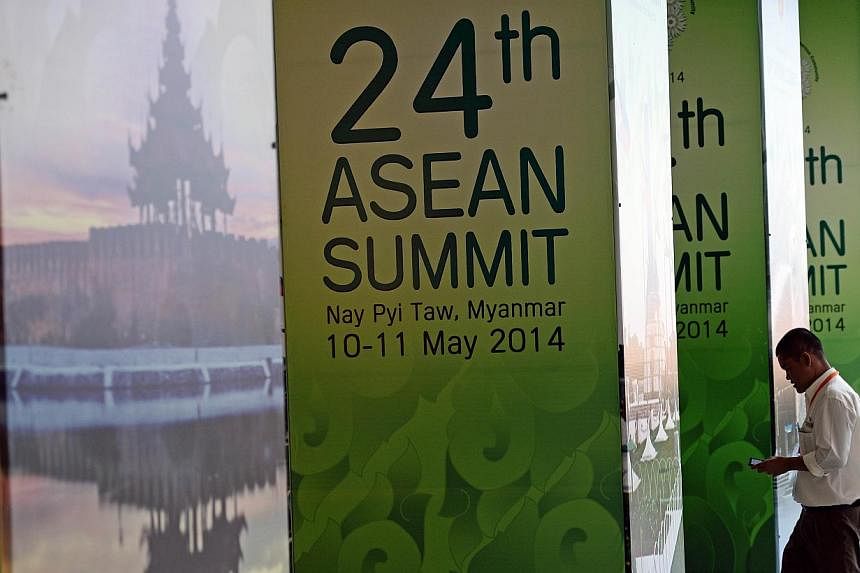Beijing's placement of a giant state-owned oil rig inside the disputed waters of the South China Sea on May 2 demonstrates without any doubt the willingness of an emerging global power to use force to settle an international dispute. The use of paramilitary forces from both sides poses very serious challenges to the fundamental principles that have underlined peace in the region for several decades. Asean members should therefore consider formulating a collective response.
In 1968 the founders of Asean observed the conduct of international relations, in particular Confrontasi and the Vietnam War, and identified three problems.
They were:
- regional countries were locked in territorial and political disputes;
- global powers were using South-east Asian countries as proxies in their struggle for superiority, and
- differences were being settled with the use of force. In Southeast Asia these problems were impeding national development and reducing national strength and resilience.
As a result, the Asean founders decided that three principles would be essential to the peace and security of the region.
First, member states would not attempt to undermine the governments of other members. That Asean members are now largely comfortable with each other demonstrates the extent to which this principle has been maintained.
Second, member states would respect the sovereignty and territorial integrity of each other. Disputes would be settled through the use of diplomacy and other non-violent means. If no consensus emerged, they would postpone decisions, rather than take unilateral action to change the status quo.
Without such principles, it would always have been tempting for larger countries to ignore the interests of smaller ones. Adherence to these principles has ensured that members have not gone to war with each other.
Third, the great powers must be engaged with care to ensure that their involvement benefits the region as a whole. Great power interference has the potential to wreak havoc. On the other hand, their absence could create a vacuum that might tempt a single great power to try to dominate the region.
Asean policy has therefore been to welcome all the great powers, inviting them to play a role in the security and development of the region. They are also asked to commit themselves to the principles of the Treaty of Amity and Cooperation (TAC), which lays out the three principles outlined above. This allows Asean countries as a group to take the lead in regional affairs through the use of diplomacy, a process known as Asean Centrality.
During the post-Cold War years, Asean leveraged on its Centrality by creating institutions such as annual dialogues and other cooperative mechanisms. There have also been attempts to create new international institutions based on the wider region of East Asia, but with Asean taking the lead.
These efforts were all made in the hope that through cooperation and respect, the various players would have more to gain from peace than from being at odds with one another.
These attempts to create a durable order of peace and security in the South-east Asia region are likely to be undone now with the rapid escalation of tensions in the South China Sea.
China is casting aside its commitment to the TAC in pursuit of what it considers to be the righting of historic wrongs. But what China considers to be its historic territory is contested. The countries of South-east Asia have equally sound historical arguments. They also have arguments based on international regimes, such as the 1982 United Nations Convention on the Law of the Sea, to which China is a signatory.
It is also possible to characterise the current action by all parties as one that threatens peace and security under Article 39 of the United Nations Charter. Article 51 of the Charter also gives a group of countries under threat the right to organise themselves for self-defence.
Asean is now approaching another Kampuchea moment. In 1979 when Vietnam overran then-Kampuchea (both countries were not Asean members at the time), Asean was split.
Singapore and Thailand objected to the Vietnamese action, considering it a threat to regional security, whereas the other three members did not. Singapore and Thailand then took the lead in persuading the other Asean members of the importance of standing up to Vietnam on the principle of the non-use of force to settle international disputes.
Similarly, while Asean as an organisation has no dispute with China, the Philippines and Vietnam have, and they are key members. Manila and Hanoi can attempt to persuade other Asean states that a common stance must be secured on how the current tensions, and in particular the placement of the oil rig, should be handled.
China has in the last two decades paid lip service to the idea of a code of conduct, while undertaking military modernisation and consolidation of its claims. It is in this light that Chinese attempts to construct economic relationships with Asean should be viewed. China appears to expect Asean members to acquiesce to its claims because it has given economic goodies to Asean. China may also believe it is strong enough to ignore Asean's need for peace and security.
Thus, it is time for Asean to reassess the extent to which China has become a threat to the regional order that Asean has carefully constructed and operated over the last four decades.
The writer is an independent consultant who has studied Vietnam for 20 years. He is also chairman of the board of directors of a Vietnamese NGO that helps marginalised and vulnerable populations.

